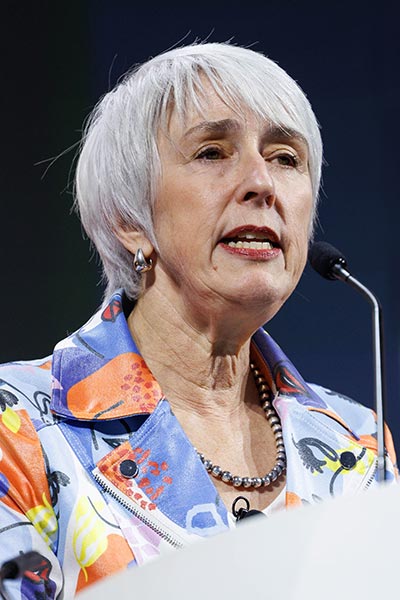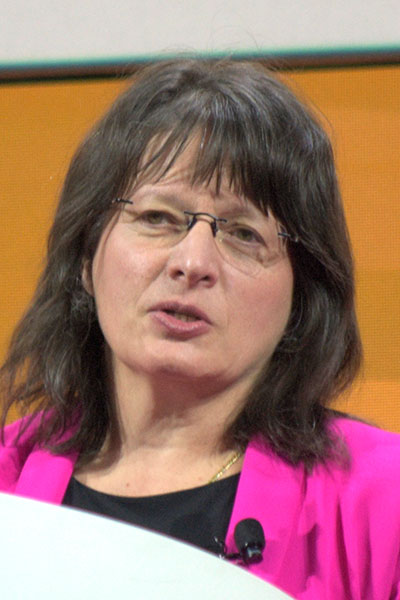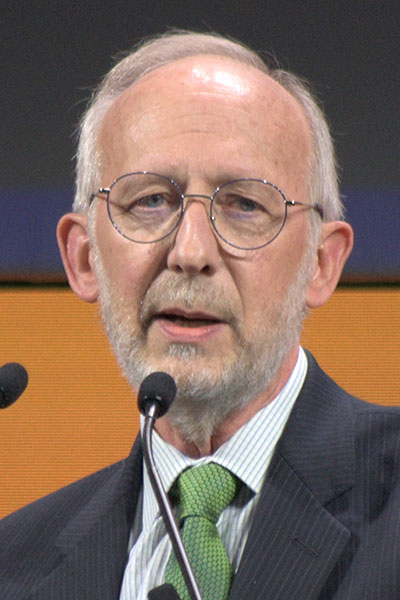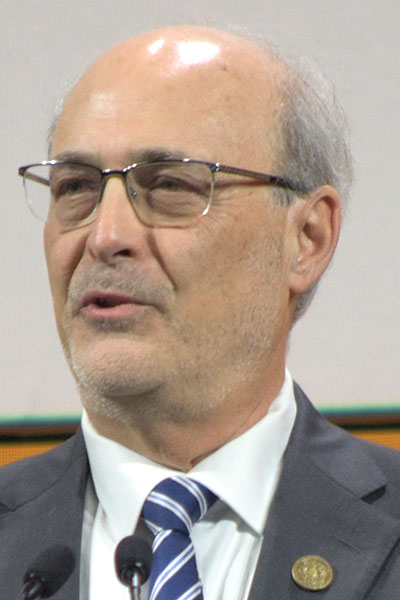Plenary speakers discuss growing understanding of early cancer and precancer biology
//
Estimated Read Time:

When it comes to cancer survival, early-stage cancer has better odds: Five-year survival rates are significantly higher for patients with early-stage vs. late-stage cancer.
“We need to better understand early cancer biology,” said Daniel D. De Carvalho, PhD, professor of medical biophysics, University of Toronto, and senior scientist, Princess Margaret Cancer Centre, Toronto, Canada. “We have the potential to increase our understanding of early cancer and precancer biology.”
De Carvalho chaired the first plenary session at the American Association for Cancer Research Annual Meeting 2024, Discovery Science in Early Cancer Biology and Interception on Saturday, April 6. The session is available on demand for registered attendees through July 10, 2024, on the virtual meeting platform.
Drivers of clonal hematopoiesis

Errors in DNA replication in hematopoietic stem cells (HSCs) accumulate over time throughout the genome. By age 70, most HSCs contain seven to 10 protein coding mutations, said Margaret A. Goodell, PhD, FAACR, professor and chair of molecular and cellular biology, Baylor College of Medicine. Most mutations are irrelevant, but some may be deleterious to the host.
“These mutations—many of them are in cancer driver genes—precede malignancy development, often by decades,” Goodell said.
Clonal hematopoiesis (CH) is a prerequisite for many hematological malignancies, she said. Somatic mutations that drive CH commonly occur in about 20 epigenetic regulation genes, DNA damage response genes, and splicing factor genes. Mutations in these genes promote survival of HSCs through various ways based on specific environmental and molecular contexts. Environmental conditions, including exposure to chemotherapy agents, bone marrow transplantation, and other stressors, can confer competitive survival advantages to some mutant cells, giving rise to CH.
Each mutation provides a distinct cancer risk profile and different opportunities for intervention.
Age-related breast tumorigenesis
Aging is a major risk factor for breast and other cancers.

Normal breast tissue shows perturbed luminal-basal mammary epithelial differentiation and altered microenvironment composition with age. Women with germline mutations in BRCA1 or BRCA2 show similar age-related changes at younger chronologic ages, reported Kornelia Polyak, MD, PhD, FAACR, professor of medicine, Dana-Farber Cancer Institute and Harvard Medical School and co-leader of the Dana-Farber Harvard Cancer Center Cell Biology Program.
Age brings specific changes in breast tissue histology and cellular phenotypes. There is a decrease in mature luminal cells and luminal progenitors (LPs) and a new population of aging LPs. Aging LPs show diminished tumor suppression and enhanced metabolic activity.
A specific ligand, midkine, increases with age. Midkine expression also increases during breast tumor progression and is associated with higher Gail risk score in younger women.
“The increase of midkine with age seems to be driving the increase of mammary tumor development,” Polyak said. “Midkine also seems to be a biomarker of increased risk of breast cancer and a predictor of poor prognosis, especially in younger women.”
Chromothripsis drives genome instability
Genomic instability is a hallmark of many cancers. Some chromosomal aberrations are driven by chromothripsis, the shattering of one or more chromosomes into potentially hundreds of pieces, which are reassembled in random order.

Chromothripsis generates extrachromosomal DNA (ecDNA) that gives rise to abnormalities and can contribute to gene amplification that drives many cancers, explained Don W. Cleveland, PhD, FAACR, professor and chair of cellular and molecular medicine, University of California San Diego School of Medicine. This ecDNA has also been shown to generate resistance to methotrexate and other anticancer agents.
Chromothripsis was recently identified as a tumorigenic mechanism for the Epstein-Barr virus (EBV).
EBV encodes EBNA1, a DNA sequence-specific binding protein, he explained. Transient EBNA1 expression cleaves chromosome 11 and induces chromothriptic shattering, inactivating tumor suppression and activating the mixed-lineage leukemia (MLL) proto-oncogene.
“Hidden within our own genome is a previously missing link between Epstein-Barr virus and cancer,” Cleveland said.
Targeting the DNA damage response to treat cancer
Some DNA repair and damage pathways can be targeted to treat cancer.

“We can target PI3K-like kinases to sensitize tumors to radiation therapy and other DNA breakage agents,” said Michael Kastan, MD, PhD, FAACR, William and Jane Shingleton Professor of Pharmacology and Cancer Biology at Duke University School of Medicine and executive director of the Duke Cancer Institute.
Ataxia-telangiectasia mutated (ATM) kinases and DNA-dependent protein kinase (DNA-PK) are critical mediators of double-strand DNA break repair, he noted.
“Dual inhibition of ATM and DNA-PK shows significantly greater radiosensitization compared to single-target inhibition,” Kastan said.
A novel small molecule dual inhibitor, XRD-0394, has dose-dependent tumor killing activity when combined with radiation therapy and no toxicity in the absence of ionizing radiation, Kastan reported.
Preclinical data support potential combinations with immunotherapy, PARP inhibitors, targeted tumor cytotoxics, and radiopharmaceuticals, he added.




